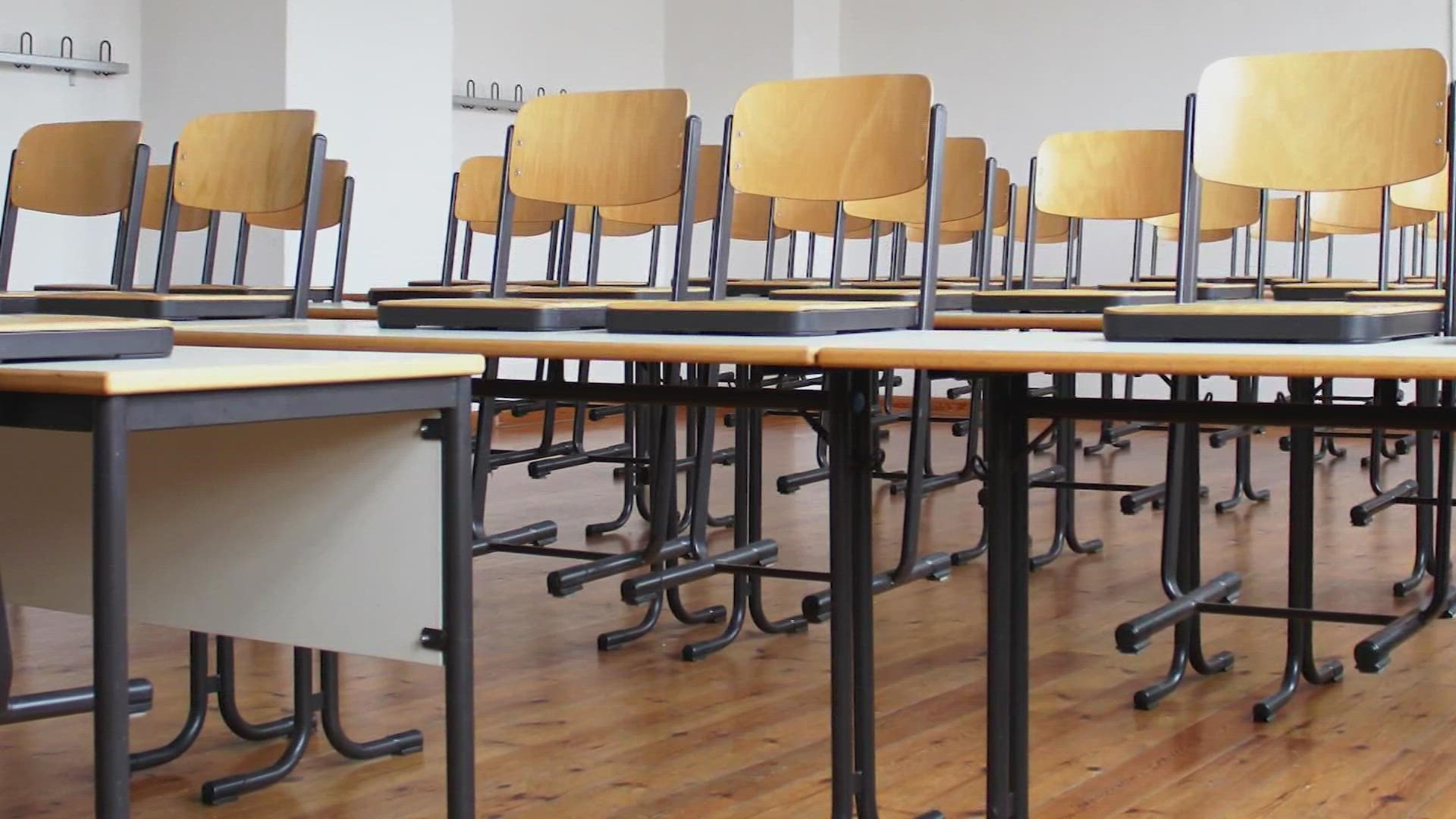HOUSTON — Teachers are under pressure like never before. Two years teaching through a pandemic while trying to balance lesson plans and their own health and safety, they say they are overworked, underpaid, and some of them are ready to walk away from the profession.
KHOU 11 Investigates asked eight public school educators from across the Greater Houston area to share what it has been like teaching through the COVID-19 pandemic.
Worrying, stressful, confusing, overwhelming and challenging are some of the words they used to describe their experiences.
After a year of remote learning, they are back in the classroom faced with the daily threat of contracting COVID.
Zelda Morgan, a high school teacher in Aldine, is also a breast cancer survivor.
“It's scary sometimes,” Morgan said.
All of the teachers told us they have had students who have contracted coronavirus.
Houston ISD high school teacher Coretta Fontenot and middle school teacher Daniel Santos see it in class attendance.
“Every week, pretty much a student is emailing you, or messaging you in Teams saying, I’ve been out because I’ve contracted COVID,” Fontenot said.
“I’ve had student’s out for days because of an infection or family member being out,” Santos said.
“We have classes that have 30 – 35 kids. How can we social distance with a class full of kids? So, you see the influx of teachers and kids getting Covid because we are not able to spread out,” Channelview ISD department director Monique Boone said.
This pandemic has put extra pressure on teachers. This school year they have been asked to go beyond the call of duty.
“We have had to go to being just classroom teachers to custodial staff, to substituting different classrooms. So, it’s really been an all-hands-on-deck kind of year,” Aldine ISD middle school teacher Tijuana Wilkes said.
“This is even more difficult than my first-year teaching,” Fontenot said.
“The workload is so heavy that I’m working at least over 60 something hours a week,” Aldine ISD elementary school teacher Loretta Lang said.
“It can be absolutely stressing and demoralizing,” Santos said.
Add to it, the emotional burden they carry every day.
“Kids come to you all the time, and they tell you things that they would never tell another living soul,” Morgan said.
“We’re having to become their psychiatrist, their counselors,” Channelview ISD middle school teacher Lisa Dishongh said.
The stress has got teachers quitting their jobs. According to the U.S. Bureau of Labor Statistics, there are 567,000 fewer educators in America’s public schools right now than there were before the pandemic.
But the teachers we spoke to said they have no plans of quitting. For them, answering "why" is easy. It is the same reason they started.
“It’s all about the children,” Lang said.
“My students,” Santos said.
“When I’m there, they’re there, and that’s what keeps me motivated to keep working,” Wilkes said.
“I don’t see myself doing anything but being a teacher,” April Mondragon Channelview ISD elementary school teacher said.
“This is where I’m supposed to be,” Boone said.
It is clear that they love their jobs, but they also want to be heard. We asked the teachers what they need, what are some things that can be done to help lighten the load?
“They really need to look at better work systems. If we could take this into the business world, they would have streamlined things and make things better,” Lang said.
Aldine teachers Tijuanna Wilkes and Zelda Morgan propose education leaders implement what is referred to as a hybrid teaching model.
“Hybrid, as in saying, for those students who are a little more able to work alone and are more motivated to do their work, maybe allowing them one or two days at home where then you have those kids who cannot be more motivated or more successful in the classroom, you have more space,” Wilkes said.
“You have to have options to teach virtually. You have to have options to teach in person,” Morgan said.
RELATED: 'I have had some tough days' | Texas teachers welcome possibility of relief during pandemic
Houston ISD teachers Santos and Fontenot are calling on the community.
“I think like at my campus at Navarro Middle school, in which we have a counselor, community members and parents to solve those academic and non-academic needs,” Santos said.
“I also think that we have to continue to provide those social and emotional learning supports, you know, in the classroom and outside of the classroom for students and teachers, because we have all heard here, teachers need that support and so do our students,” Fontenot said.
The teachers who shared their stories with us are persistent, determined, and they are optimistic.
“There is hope. It’s going to get better, y’all,” Lang said.
So, what can you do to help? Parents, make sure your kids are doing their part at home, volunteer if you can, help fund raise, and if nothing else, take a second to send your child’s teacher an email and let them know they are appreciated. Sometimes it is all they need to get through the day.

